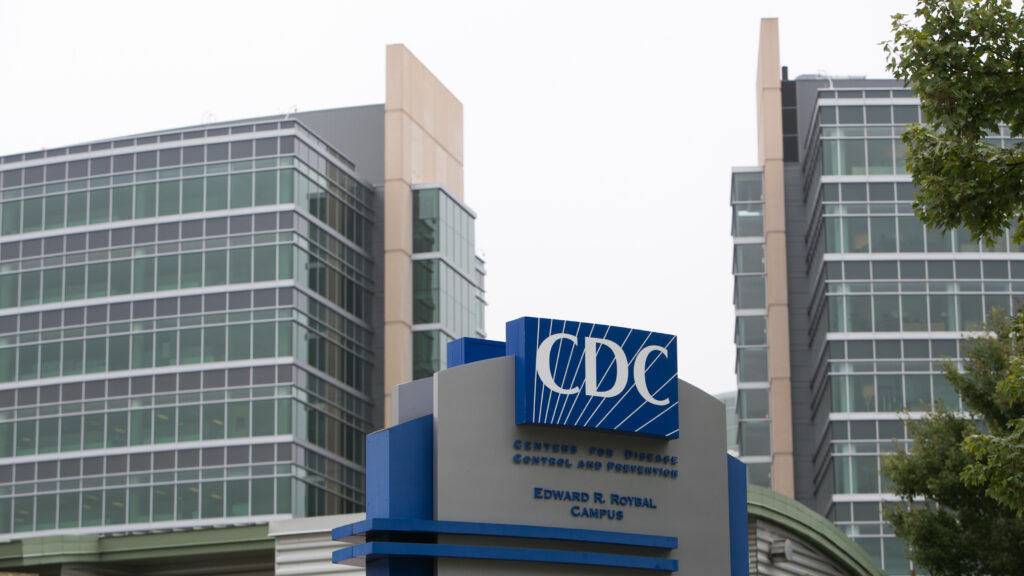Get your daily dose of health and medicine every weekday with STAT’s free newsletter Morning Rounds. Sign up here.
Good morning.
advertisement
I keep a slim copy of Annie Dillard’s The Writing Life near my desk for moments when I need a brief distraction. This week I cracked the book and found her famous, evergreen caution: “How we spend our days is, of course, how we spend our lives. What we do with this hour, and that one, is what we are doing.” May we use our hours well.
Class action lawsuit over UnitedHealth’s AI denials nears key moment

UnitedHealth Group headquarters in Minnetonka, Minn. (Jenn Ackerman for STAT)
A federal judge will soon decide whether a class action lawsuit against UnitedHealth Group and a subsidiary over algorithm-based care denials can move forward. If it does, the suit (filed in 2023 following STAT’s reports) could open the door for attorneys to sift through the company’s internal communications, our Bob Herman reports. These kinds of big lawsuits can take years to make their way through the courts but, in this case, there’s a sense of urgency – many of the alleged victims are elderly and ill.
Zach Baron, director of the Center for Health Policy and the Law at Georgetown’s O’Neill Institute, told Bob it’s difficult to predict the outcome because of the scant legal precedent governing a technology like AI and a longstanding public benefit like Medicare. “Regardless of what the judge decides here, it’s not going to be the final word on this, just given where we are with the state of the law and new technologies,” Baron said.
advertisement
UnitedHealth has denied the allegations that its technology was the only basis for whether a patient received care. Get into the details, in Bob’s story.
Signs of life at the CDC
The Centers for Disease Control and Prevention published its Morbidity and Mortality Weekly Report at the usual time yesterday after missing a few weeks. The reports – which disseminate key public health information and recommendations – have been trapped in a continuing communications freeze imposed by the Trump administration. Hearing “the voice of CDC” after nearly a month indicates a slight thaw, but this new MMWR is a shadow of its former self. It includes just two “Notes from the Field,” briefs on the wildfires in Maui and L.A., respectively. Usually, MMWR includes three full studies.
In other signs of life at the agency, the CDC issued a health alert Thursday about the Ebola outbreak in Uganda, which is being caused by the Sudan virus. Vaccination efforts using an experimental vaccine could begin as early as this weekend. Keep up with the latest in global health here.
A test of RSV antibodies in Spanish babies
New data from Spain show Beyfortus, the antibody injection that protects babies from RSV, was highly protective there during the first year of its rollout. Spain was one of the first countries to offer all babies the injection during their first RSV season.
A case-control study showed that the injection was 80% effective at preventing hospitalizations for RSV in inoculated children when compared to kids who didn’t get the shot. There was a similar effectiveness for more serious outcomes from RSV infection — ICU admissions and the need for mechanical ventilation.
The effectiveness of the long-acting monoclonal antibody, nirsevimab, “together with its high coverage in Spain, have resulted in a substantial impact,” and bodes well for similar campaigns in upcoming seasons, the researchers wrote in the online journal Eurosurveillance. Beyfortus is marketed by Sanofi and AstraZeneca. — Helen Branswell
Q&A: NYC’s project to improve residents’ lifespans

Brooklyn, N.Y., from above, including downtown, Cobble Hill, and Boerum Hill. (ED JONES/AFP via Getty Images)
New York City is embarking on an ambitious plan to slash chronic disease rates and extend lifespans on the local level. To do so, acting health commissioner Michelle Morse and her allies will try everything from providing basic income to “prescribing parks” for neighborhoods. STAT’s Liz Cooney spoke to Morse about her roadmap.
advertisement
Increasing longevity is certainly an ambitious goal. How will you get there?
This report is not just about wagging our finger at New Yorkers and saying, “Eat healthy.” It’s about saying: How do we make it easy for all New Yorkers, no matter their economic patterns or level of poverty, to eat healthy foods and acknowledge that…economic marginalization is a big driver of chronic disease?
How do you make change?
We have extensive data, literally by community district, by borough, by neighborhood — data that showed us exactly where we need to focus our resources. If I know that the rate of diabetes in the Bronx is two times that in other places, or that the rate of diabetes in high poverty neighborhoods is two times that in low poverty neighborhoods, that gives me a roadmap for exactly where I need to take my interventions.
Read the full Q&A here.
First Opinion: Inclusive clinical trials are imperative
If you tried to click on the main website for the Food and Drug Administration’s Diversity Action Plan guidelines in the past few weeks, you’d hit this: “Page Not Found.” It’s just one of many government sites that have gone down in recent days, some because of a Trump Executive Order banning diversity, equity and inclusion efforts. The guidelines were set forth in 2022, and enacted by Congress in recognition of the need to improve diversity in clinical trials.
And, in a First Opinion essay, former FDA collaborator Suzanne B. Robotti predicts the plan will come back to life — out of necessity. “The trials we looked at were overwhelmingly populated by white men,” writes Robotti, who has been on over 20 FDA drug advisory committees and other panels. When they’re not inclusive, trials become less useful, because medications may fail to address the unique needs of all patient subgroups.
Another funding stream dries up amid war on DEI
The latest blow to diversity in science and health inequities: This week, the Howard Hughes Medical Institute abruptly closed down a $60 million program aimed at retaining undergraduate STEM students. The decision came as a shock to the 104 institutions receiving funding through the program, called Inclusive Excellence, or IE3. Those colleges and universities used the money to improve introductory science courses, hire students in labs, create teaching resources, and more.
advertisement
Some researchers — already rocked by the threat of federal funding cuts — had hoped philanthropic sources with deep pockets could help sustain them for the next four years. HHMI’s retreat from the IE3 program suggests that may not happen, especially considering how vocal the institute had been about diversity in science, STAT’s Anil Oza reports. Researchers he spoke with struck a somber tone, saying they were running out of options for where to turn for support on work that even mentions the word “diversity.” Read more.
What we’re reading
-
DOGE transitions to records system not subject to FOIA, 404 Media
-
Federal judge pauses deadline for Trump administration’s buyouts, Washington Post
-
Remembering a remarkable Duchenne champion, STAT
-
Abandoned in the middle of clinical trials, because of a Trump order, New York Times
-
Personalized cancer vaccine shows potential in kidney cancer, STAT+

